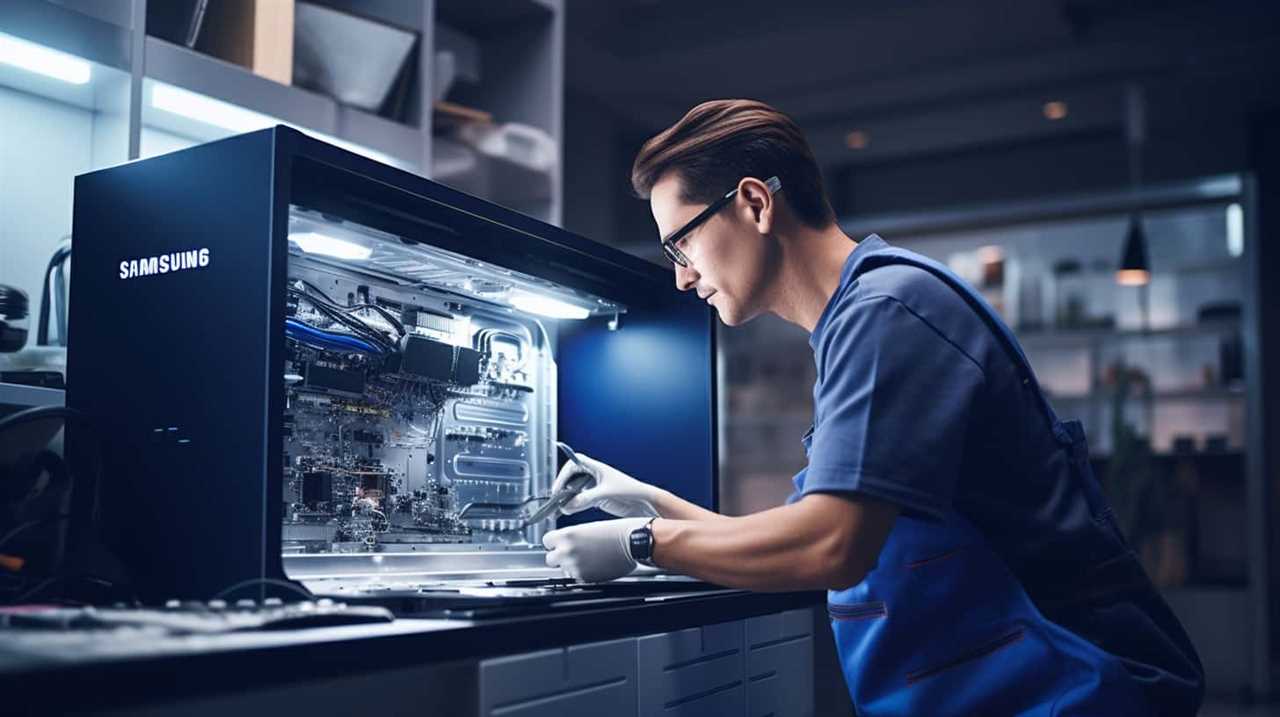When it comes to electrical safety, GFCI trips are a frequent issue that can confuse homeowners. Knowing how appliances and GFCIs interact is essential for keeping an electrical system safe and operational. A common inquiry is whether an appliance can cause a GFCI to trip.
This article aims to shed light on this topic, providing insight into how GFCIs work, common causes of GFCI trips, and potential appliance-related issues that can lead to these trips. By delving into the compatibility of appliances with GFCIs, as well as the impact of power surges and water on GFCI trips, we can equip ourselves with the knowledge necessary to prevent such occurrences and ensure a secure and efficient electrical setup.
Key Takeaways
- GFCIs detect imbalances in electrical current and can be tripped by faulty wiring, moisture, and short circuits.
- Certain appliances may not be suitable for GFCI protection due to false trips, especially high current draw appliances.
- Regular inspection, maintenance, and consultation with experts can resolve compatibility issues between appliances and GFCIs.
- Preventive measures such as installing surge protectors, keeping appliances away from water sources, and testing appliances can help prevent GFCI trips and ensure electrical safety.
Understanding GFCI Trips
The understanding of GFCI trips is essential for identifying the causes and preventing potential electrical hazards.
One of the common misconceptions about GFCI trips is that they are solely caused by faulty appliances. While it is true that a malfunctioning appliance can cause a GFCI to trip, there are other factors at play as well.

GFCIs are designed to detect imbalances in electrical current, such as when current is leaking to the ground due to a fault. This can be caused by a variety of issues, including faulty wiring, moisture, or even a short circuit.
Troubleshooting GFCI trips involves a systematic approach, starting with disconnecting all appliances and then reconnecting them one by one to identify the culprit.
Additionally, ensuring proper grounding and regular maintenance can help prevent false trips and ensure the safety of electrical systems.
Common Causes of GFCI Trips
One major contributor to GFCI trips is the presence of faulty electrical appliances. Understanding GFCI functionality is crucial in troubleshooting GFCI trips caused by these appliances.

When an appliance has a ground fault, it can cause an imbalance in the electrical current, triggering the GFCI to trip. Faulty appliances can have various issues, such as damaged cords, loose connections, or internal wiring problems. These issues can create a path for the electrical current to escape, leading to a ground fault.
To troubleshoot GFCI trips caused by appliances, it is important to inspect the appliances for any visible damage, test them on different GFCI outlets, and consider consulting a professional electrician if the problem persists.
Regular maintenance and proper usage of electrical appliances can help prevent GFCI trips caused by faulty appliances.
How GFCI Works
To understand how GFCI works, it is important to grasp the fundamental principles behind its functionality. GFCI, which stands for Ground Fault Circuit Interrupter, is a device designed to protect against electrical shock.

It works by continuously monitoring the current flowing through a circuit. It compares the current flowing into the circuit with the current flowing out of the circuit. If there is a difference of even a few milliamperes, it indicates a ground fault, which can potentially lead to electric shock.
In such cases, the GFCI quickly interrupts the flow of electricity, preventing any harm to the person or damage to the appliance.
Understanding GFCI functionality is crucial for ensuring electrical safety in homes and workplaces. Proper installation and regular testing of GFCIs are of utmost importance to ensure their effectiveness in protecting against electrical hazards.
Now, let’s delve into the topic of appliances and GFCI compatibility.
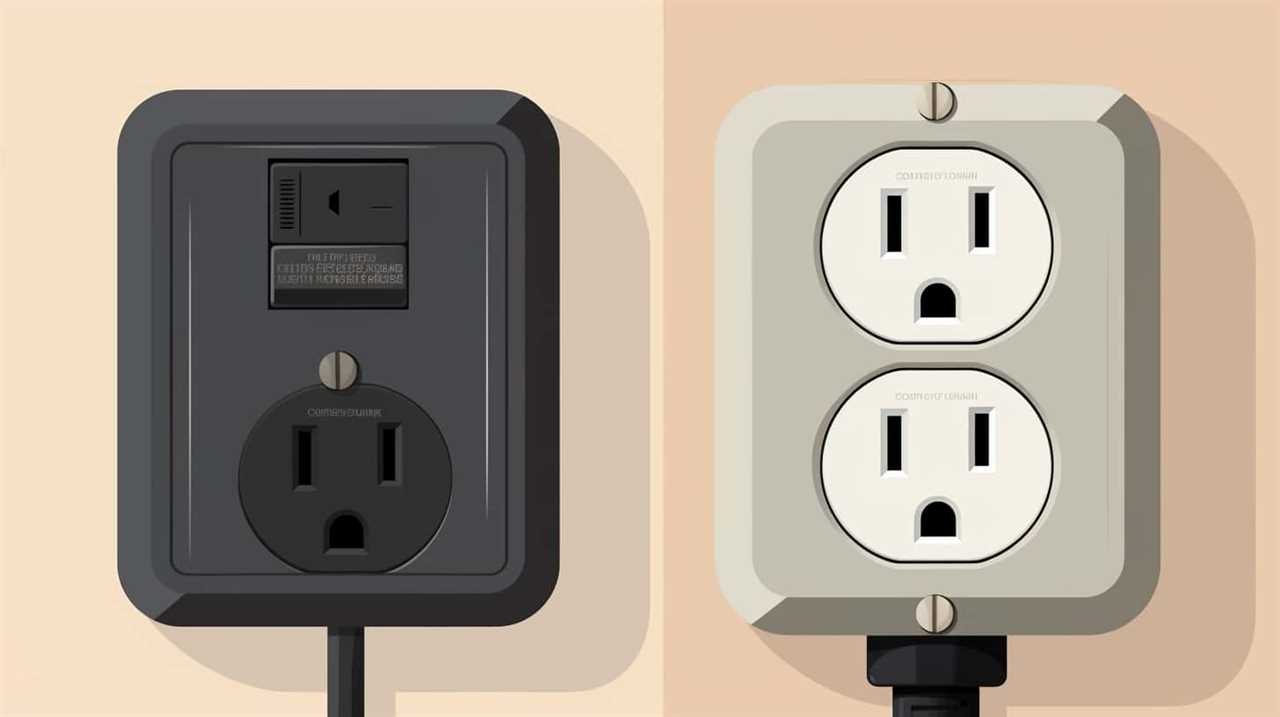
Appliances and GFCI Compatibility
When it comes to GFCI compatibility with appliances, there are certain limitations that need to be considered. Some appliances, such as refrigerators and freezers, may not be suitable for GFCI protection due to the risk of false trips.
On the other hand, certain appliances, like hair dryers and power tools, may have compatibility issues due to their high current draw.
Therefore, it is essential to ensure that appliances are properly evaluated for GFCI compatibility to maintain both safety and functionality.
GFCI Limitations for Appliances
GFCIs have limitations when it comes to compatibility with appliances. Understanding these limitations is essential for troubleshooting appliance issues and ensuring the safe operation of electrical systems.
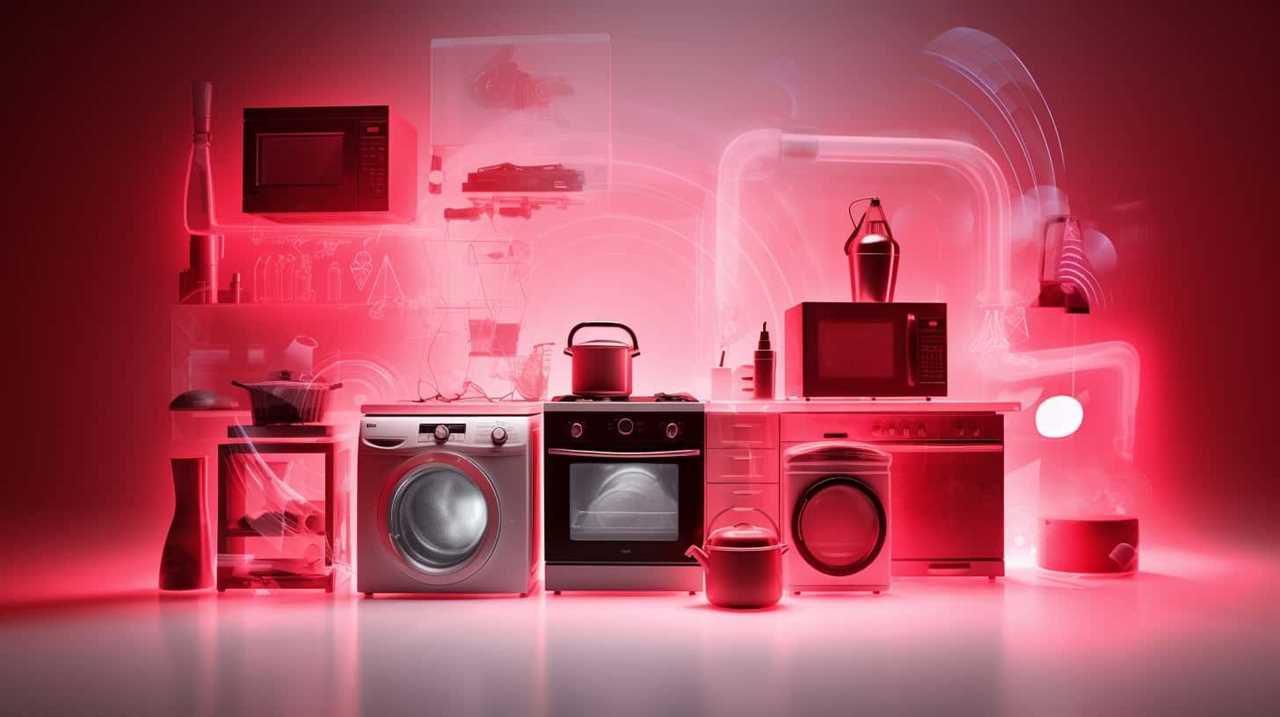
While GFCIs are designed to protect against electrical shocks and fires caused by ground faults, they may not be suitable for all appliances.
Certain appliances, such as refrigerators, freezers, and sump pumps, can cause nuisance tripping of GFCIs due to their high starting currents. This can be problematic, especially in critical situations where power loss can lead to food spoilage or flooding. In such cases, it is recommended to use a dedicated circuit without a GFCI or install a GFCI breaker at the electrical panel instead.
Other appliances, such as certain power tools or equipment with electronic components, may also create issues with GFCIs. These appliances can produce small amounts of leakage current that may trip the GFCI. In such cases, it is important to consult the appliance manufacturer or a qualified electrician to determine the best course of action.
Common Appliance Compatibility Issues
Appliance compatibility with GFCIs is a common concern in electrical systems. Understanding appliance compatibility and troubleshooting appliance issues can help ensure the smooth operation of GFCIs. Here are four common appliance compatibility issues to be aware of:

- Leakage current: Some appliances, such as older models or those with faulty insulation, may have leakage currents that can trip GFCIs. Regular inspection and maintenance of appliances can help identify and resolve this issue.
- Motor-based appliances: Certain motor-based appliances, like refrigerators or air conditioners, can cause momentary electrical imbalances when they start or stop. This can sometimes trigger a GFCI trip. Upgrading to GFCIs with higher trip levels or installing dedicated circuits can mitigate this problem.
- Grounded appliances: Appliances with a separate grounding conductor can sometimes cause GFCI trips. Ensuring proper wiring and grounding techniques are used can minimize this compatibility issue.
- Sensitivity mismatch: Some GFCIs may have different sensitivity levels than certain appliances. It is important to select GFCIs that are compatible with the specific requirements of the appliances in use.
Ensuring Appliance Safety
To ensure the safety of appliances and their compatibility with GFCIs, it is crucial to prioritize proper installation and regular maintenance. Appliance maintenance plays a pivotal role in preventing potential issues that may compromise electrical safety.
Regularly inspecting and cleaning appliances can help identify any damaged cords, loose connections, or faulty components that may pose a risk. It is also important to adhere to electrical safety precautions when using appliances, such as avoiding overloading circuits and using surge protectors.
Additionally, following manufacturer guidelines for appliance installation and usage is essential for ensuring GFCI compatibility. By implementing these measures, homeowners can minimize the risk of appliances tripping GFCIs and protect themselves from potential electrical hazards.
Moving on to potential appliance-related issues…
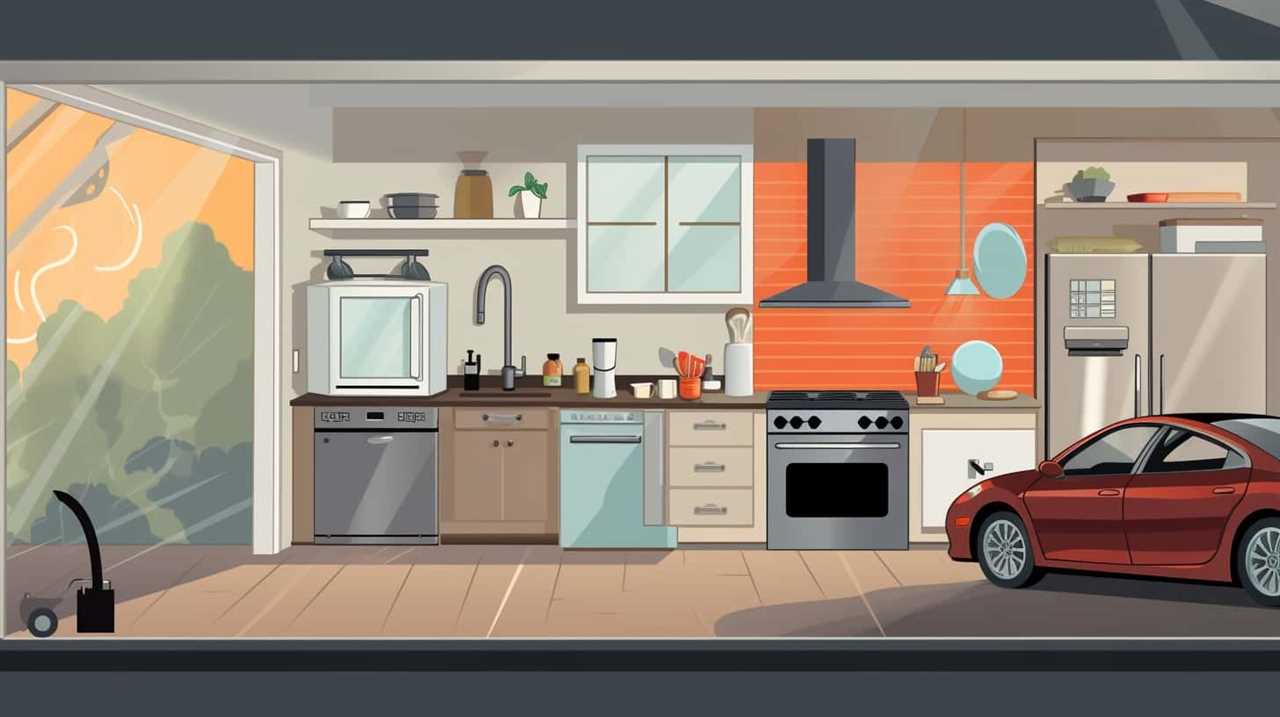
Potential Appliance-Related Issues
When it comes to GFCI and appliance compatibility, there are several potential issues that can arise.
One of the main causes of appliance tripping is a ground fault, which occurs when there is an unintended electrical path between the appliance and the ground. This can be caused by damaged cords, faulty wiring, or even moisture infiltration.
To prevent appliance-related accidents, it is important to regularly inspect and maintain appliances, ensuring that they are in proper working condition and free from any potential hazards.
GFCI and Appliance Compatibility
The compatibility between a GFCI and an appliance can determine whether or not the appliance has the potential to trip the GFCI. Understanding appliance compatibility is crucial when troubleshooting appliance issues in relation to GFCIs. Here are four key factors to consider in terms of GFCI and appliance compatibility:

- Wiring: Ensure that the appliance’s wiring is in good condition and properly grounded. Faulty wiring can cause electrical imbalances that may trip the GFCI.
- Leakage Current: Some appliances, such as older models or those with faulty insulation, may have higher leakage currents. These currents can exceed the threshold of the GFCI, causing it to trip.
- Capacitive Coupling: Appliances with high capacitive coupling can cause false leakage currents, triggering the GFCI. This is often seen in appliances with motor-driven components.
- Electronic Circuitry: Appliances with electronic circuitry may have components that introduce harmonics or transient currents, which can affect the GFCI’s operation.
Understanding these compatibility issues is crucial to preventing unnecessary tripping of the GFCI and ensuring the safe operation of appliances.
Transitioning into the next section, let’s now explore the causes of appliance tripping and how to address them.
Causes of Appliance Tripping
Appliance tripping can occur occasionally, especially if there are underlying issues with the appliance. To understand the causes of appliance tripping, it is essential to have a good understanding of appliance function and be able to troubleshoot appliance issues effectively. Below is a table highlighting potential appliance-related issues that can lead to tripping:
| Appliance-Related Issues | Possible Causes |
|---|---|
| Overheating | Faulty thermostat, blocked vents, or dirty filters |
| Short circuit | Damaged wiring or faulty components |
| Ground fault | Damaged insulation or faulty grounding |
| Excessive power consumption | Worn-out motor or inefficient operation |
| Electrical overload | Multiple appliances on the same circuit or faulty wiring |
Preventing Appliance-Related Accidents
To mitigate potential appliance-related accidents, it is crucial to address the underlying issues identified in the previous subtopic. Understanding appliance safety and troubleshooting appliance issues are essential steps in preventing accidents. Here are four key measures to consider:

- Regular maintenance: Conduct routine inspections and cleaning of appliances to ensure they are in proper working condition. This includes checking for loose wires, frayed cords, or any signs of damage that could lead to electrical hazards.
- Electrical load management: Avoid overloading electrical outlets by plugging multiple appliances into a single socket. Distribute the load evenly across different outlets to prevent overheating and potential fire hazards.
- Proper usage: Familiarize yourself with the manufacturer’s instructions and guidelines for using each appliance. Follow recommended safety practices, such as not using appliances near water sources and unplugging them when not in use.
- Prompt repairs: Address any appliance malfunctions or issues immediately. Do not attempt to fix complex problems yourself; instead, consult a qualified technician to ensure proper repairs are done safely.
Overloading and GFCI Trips
One common cause of GFCI trips is overloading of electrical circuits. Overloading occurs when the amount of current flowing through a circuit exceeds its capacity. This can happen when multiple high-powered appliances are connected to a single circuit, drawing more current than the circuit can handle. To prevent overloading, it is important to distribute the load evenly across multiple circuits and avoid connecting too many appliances to a single circuit. Additionally, it is crucial to follow appliance safety measures, such as not using extension cords or power strips for high-powered appliances. By taking these precautions, the risk of overloading and subsequent GFCI trips can be minimized.
Now, let’s explore another common cause of GFCI trips, namely faulty wiring.
Faulty Wiring and GFCI Trips
Faulty wiring can significantly contribute to GFCI trips, posing potential electrical hazards and compromising the functionality of appliances. Understanding faulty wiring and troubleshooting GFCI trips is crucial for maintaining a safe and efficient electrical system.
Here are four key points to consider:
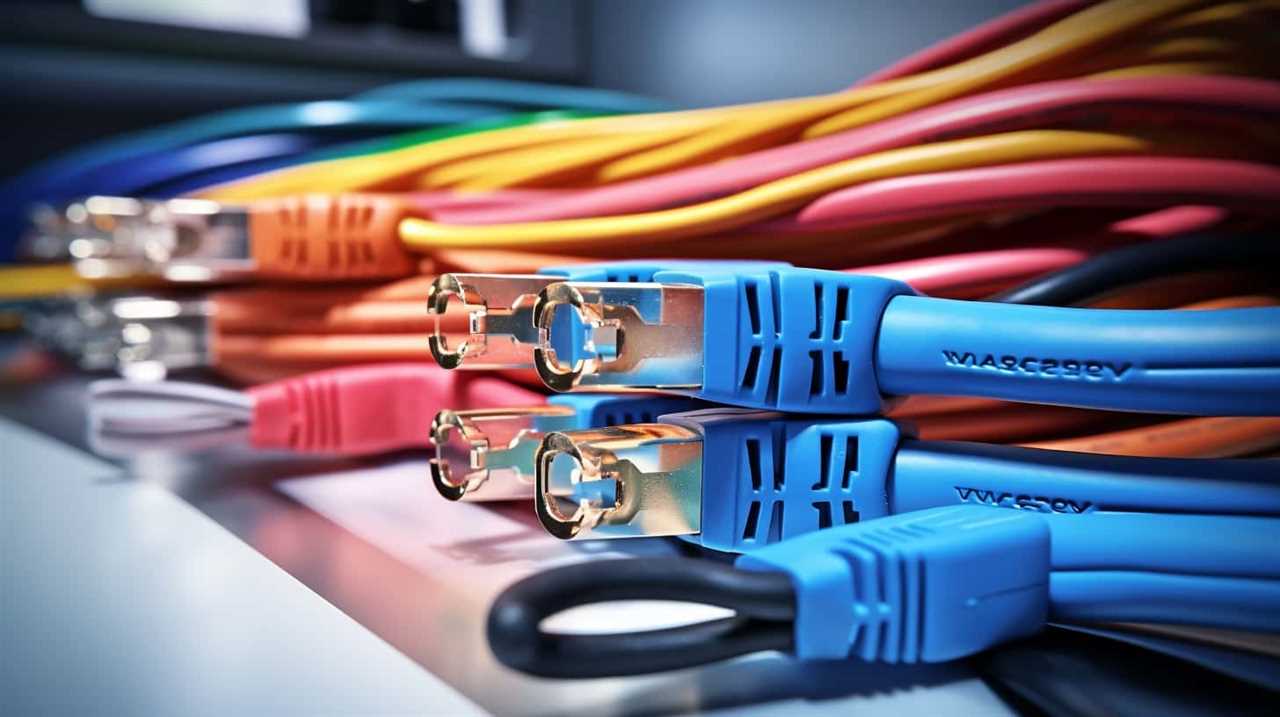
- Poor insulation: Damaged or degraded insulation can cause electrical leakage, leading to GFCI trips. Regular inspection and maintenance of wiring insulation is essential to prevent this issue.
- Grounding issues: Improper grounding can cause electrical currents to flow through unintended paths, triggering GFCI trips. Ensuring proper grounding connections is essential for the overall safety of the electrical system.
- Faulty connections: Loose or corroded connections can create arcing or overheating, causing GFCI trips. Regular inspection and tightening of electrical connections can help prevent this problem.
- Overloaded circuits: Overloading a circuit with excessive electrical load can lead to overheating and GFCI trips. Proper distribution and balancing of electrical loads across circuits is necessary to prevent overloading.
Understanding and addressing these common issues associated with faulty wiring can help troubleshoot GFCI trips effectively.
Now, let’s move on to discussing the relationship between power surges and GFCI trips.
Power Surges and GFCI Trips
When it comes to appliance safety measures, it is important to understand the causes of GFCI trips and how to prevent power surges.
Appliances can sometimes trigger GFCI trips due to faulty wiring or electrical faults within the appliance itself.

Additionally, power surges can occur when there is a sudden increase in voltage, which can also lead to a GFCI trip.
Appliance Safety Measures
To ensure appliance safety, it is important to understand how power surges and GFCI trips can be effectively prevented. Here are some key measures to consider:
- Understanding Appliance Compatibility: Ensure that the appliance you are using is compatible with the electrical system in your home. Check the voltage and current requirements specified by the manufacturer to avoid overloading circuits.
- Importance of Appliance Maintenance: Regularly inspect and maintain your appliances to prevent potential hazards. Clean them, check for loose connections, and replace worn-out cords or components. Faulty electrical components can lead to power surges and GFCI trips.
- Use Surge Protectors: Install surge protectors to safeguard your appliances from sudden voltage spikes. Surge protectors divert excess electricity and prevent damage to your appliances.
- Install GFCI Outlets: Ground Fault Circuit Interrupters (GFCIs) are designed to protect against electrical shocks and GFCI trips. Install them in areas where water is present, such as kitchens and bathrooms, to ensure safety.
Causes of GFCI Trips
One common cause of GFCI trips and power surges is the presence of electrical faults or malfunctions in appliances. Understanding GFCI functionality is crucial for troubleshooting GFCI trips and identifying the root cause of the problem.
GFCIs are designed to monitor the flow of electricity and quickly shut off power when a ground fault is detected. Electrical faults in appliances, such as a short circuit or a ground fault, can cause a sudden surge in electrical current, triggering the GFCI to trip. These faults can occur due to damaged wiring, faulty components, or improper installation.
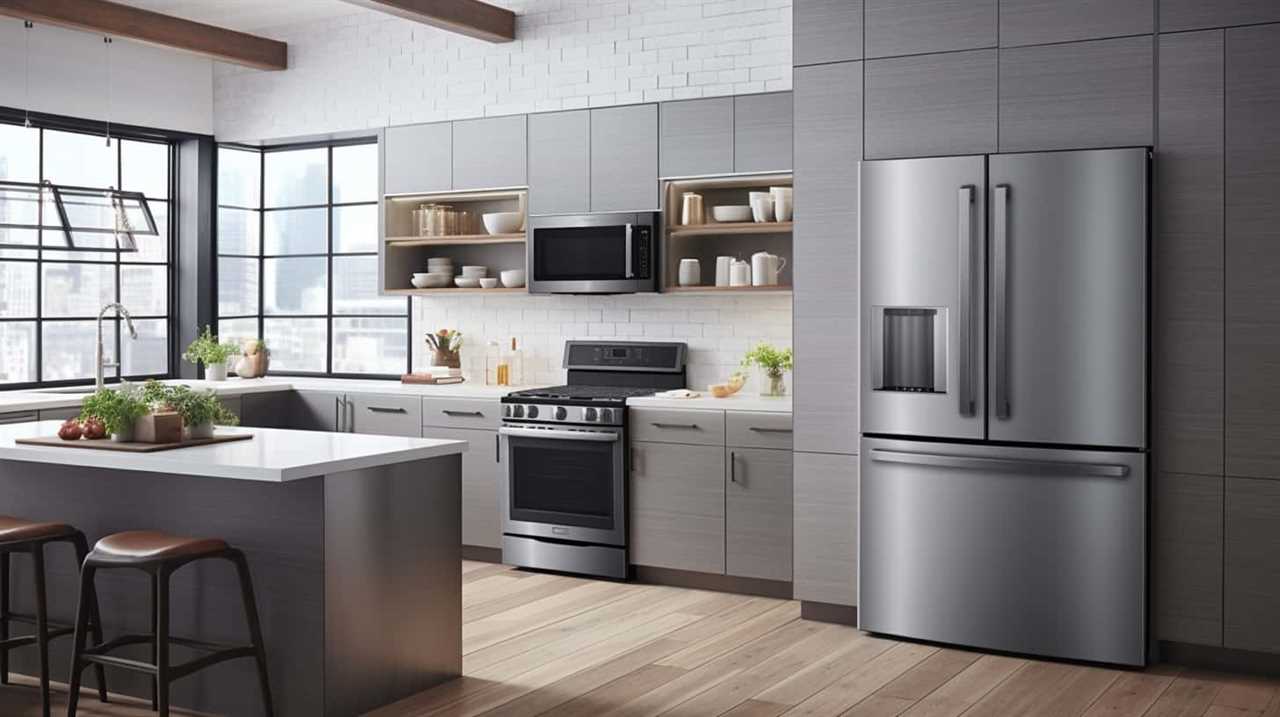
By identifying and addressing these electrical faults in appliances, it is possible to prevent GFCI trips and minimize the risk of power surges.
Transitioning to the subsequent section about preventing power surges, let’s explore some effective measures to safeguard against this common issue.
Preventing Power Surges
Continuing from the previous discussion on causes of GFCI trips, it is important to address the topic of preventing power surges and their connection to GFCI trips. Power surges can cause significant damage to electrical appliances and devices, and it is crucial to take preventive measures to avoid such situations.
Here are four effective ways to prevent electrical damage and reduce the risk of GFCI trips:
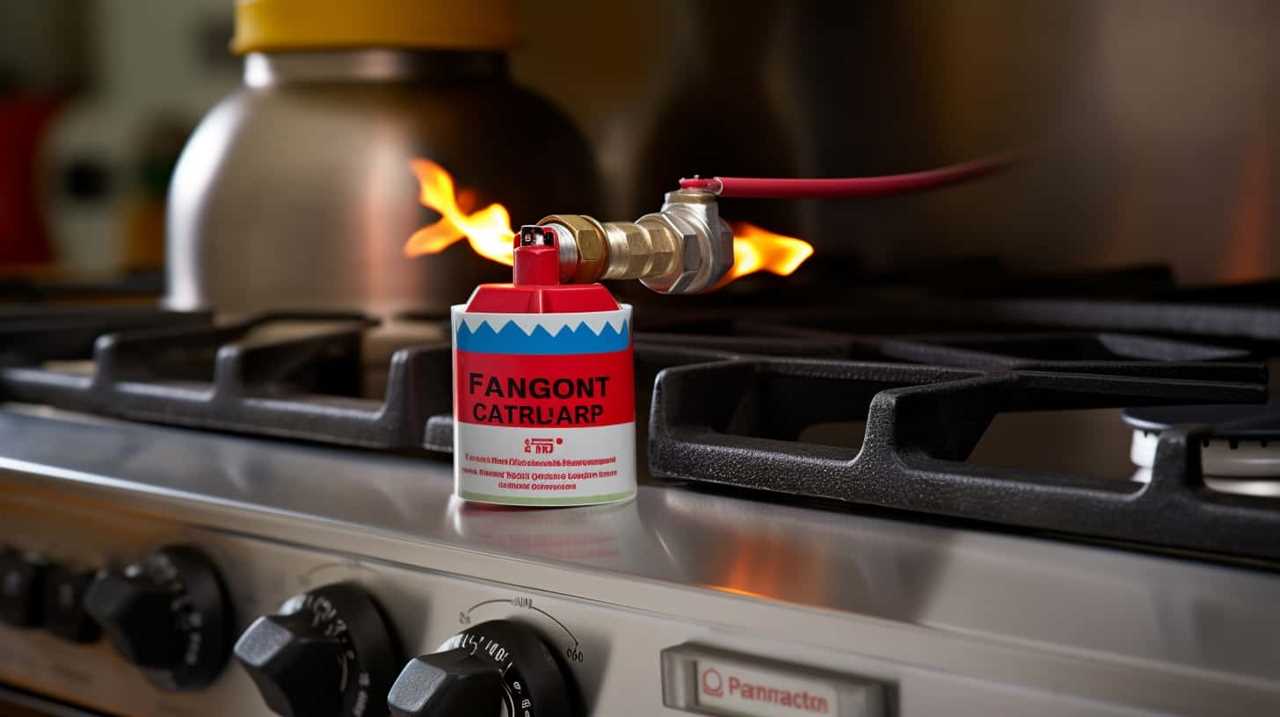
- Install surge protectors: These devices are designed to divert excess voltage away from your appliances, protecting them from power surges.
- Use power strips: Power strips with built-in surge protection can provide an additional layer of defense against power surges, especially when used with sensitive electronics.
- Avoid overloading circuits: Overloading circuits can lead to power surges. Make sure to distribute electrical loads evenly across different circuits to prevent overload situations.
- Regular maintenance: Conducting routine inspections and maintenance of your electrical system can help identify potential issues and prevent power surges.
By implementing these preventive measures, you can significantly reduce the risk of electrical damage and GFCI trips caused by power surges.
In the next section, we will discuss the connection between water and GFCI trips.
Water and GFCI Trips
When exposed to water, appliances can cause a GFCI to trip. Water damage poses a significant risk to electrical safety, as it can lead to short circuits and electrical shocks. GFCIs, or Ground Fault Circuit Interrupters, are designed to detect imbalances in the electrical current and quickly shut off power to prevent accidents.
When an appliance comes into contact with water, it can create a path of least resistance for the electrical current, causing the GFCI to detect the imbalance and trip. This immediate response is crucial in preventing potential electric shocks and minimizing the risk of electrical fires.

Therefore, it is essential to ensure that appliances are kept away from water sources and that GFCIs are installed in areas exposed to moisture to maintain electrical safety.
Testing Appliances With GFCI
To accurately assess whether an appliance can trip a GFCI, it is crucial to test it with a ground fault circuit interrupter. By following proper testing methods and troubleshooting techniques, you can ensure the safety and functionality of your appliances.
Here are four steps to test appliances with a GFCI:
- Check the wiring: Inspect the appliance’s power cord for any signs of damage or loose connections. Make sure the grounding plug is intact and properly connected.
- Reset the GFCI: Plug the appliance into a GFCI outlet and press the reset button. If the GFCI trips immediately, it indicates a fault in the appliance’s wiring or internal components.
- Isolate the issue: Test the appliance on a different GFCI circuit or outlet to determine if the problem lies with the appliance or the electrical system.
- Consult a professional: If the appliance consistently trips the GFCI, it is recommended to seek help from a qualified electrician to identify and resolve the underlying issue.
Preventing GFCI Trips With Appliances
In order to minimize the risk of GFCI trips caused by appliances, it is essential to implement preventative measures that address potential electrical issues.

Regular appliance maintenance is crucial in preventing GFCI trips. This includes inspecting cords and plugs for any signs of damage or wear, such as frayed wires or loose connections.
Troubleshooting appliance issues can also help prevent GFCI trips. If an appliance repeatedly causes the GFCI to trip, it may indicate a faulty component or a wiring problem. In such cases, it is recommended to consult a qualified electrician to diagnose and resolve the issue.
Additionally, it is important to use appliances that are properly rated for the electrical circuit and to avoid overloading outlets, as this can also lead to GFCI trips.
Frequently Asked Questions
What Is the Maximum Number of Appliances That Can Be Connected to a GFCI Outlet Without Causing a Trip?
The maximum number of appliances that can be connected to a GFCI outlet without causing a trip depends on various factors such as the maximum load capacity of the outlet and the power requirements of the appliances.

Can a GFCI Trip Be Caused by Using an Extension Cord With an Appliance?
Yes, an extension cord used with an appliance can cause a GFCI trip if it is damaged or overloaded. Additionally, water exposure to the appliance or the GFCI itself can also lead to a trip.
How Do Power Surges Affect GFCI Tripping?
Power surges can cause GFCI tripping by exceeding the device’s load capacity. Faulty wiring can also lead to GFCI trips. Understanding the impact of power surges on GFCI tripping is crucial for maintaining electrical safety and preventing damage to appliances.
Can a Faulty Light Bulb Cause a GFCI Trip?
A faulty light bulb can potentially cause a GFCI trip if it has faulty wiring or if water damage has occurred, compromising the electrical integrity. It is important to ensure all appliances are in proper working condition to prevent such trips.
Is It Possible for GFCI Trips to Occur Due to Fluctuations in Voltage?
Voltage fluctuations can indeed cause GFCI tripping. Fluctuations in voltage can result in sudden changes in electrical current, surpassing the GFCI’s threshold and triggering a trip. It is important to ensure a stable electrical supply to prevent such occurrences.
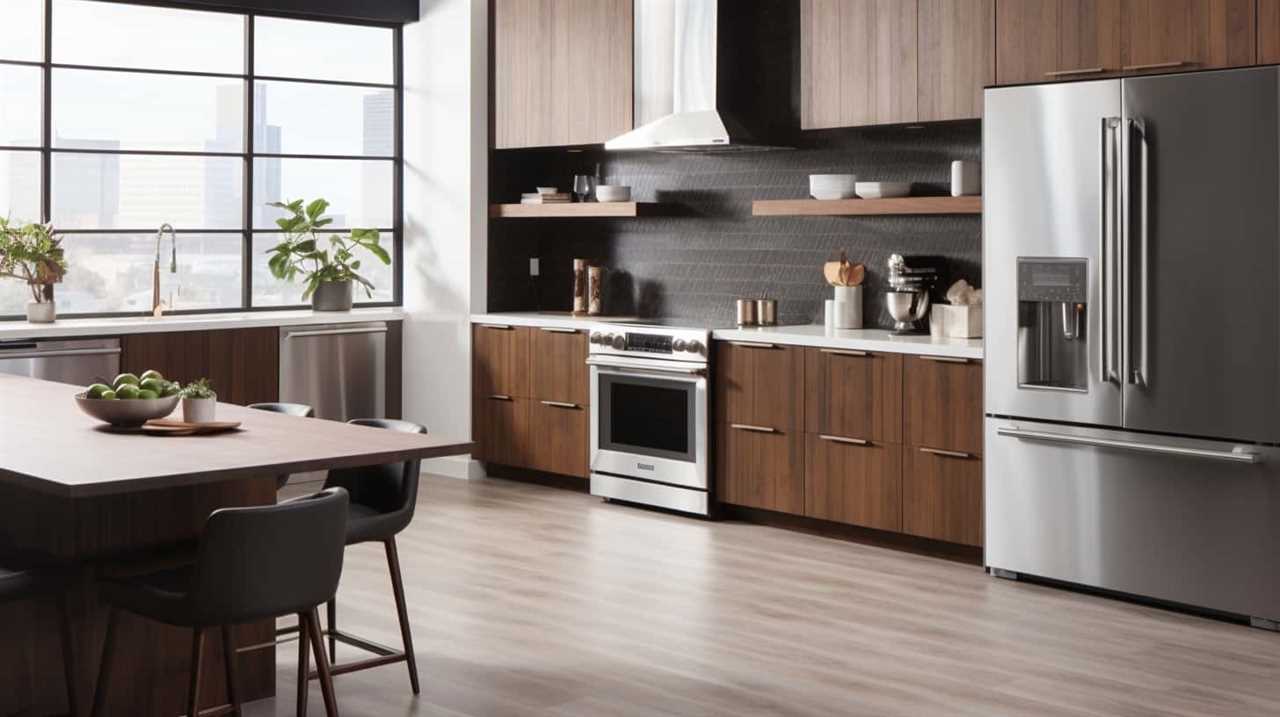
Conclusion
In conclusion, it is possible for an appliance to trip a GFCI (Ground Fault Circuit Interrupter) due to various factors such as power surges, water exposure, or compatibility issues.
Understanding how GFCIs work and testing appliances with GFCI can help prevent trips.
By being aware of common causes and taking necessary precautions, individuals can ensure the safe and efficient operation of their appliances while avoiding potential electrical hazards.





